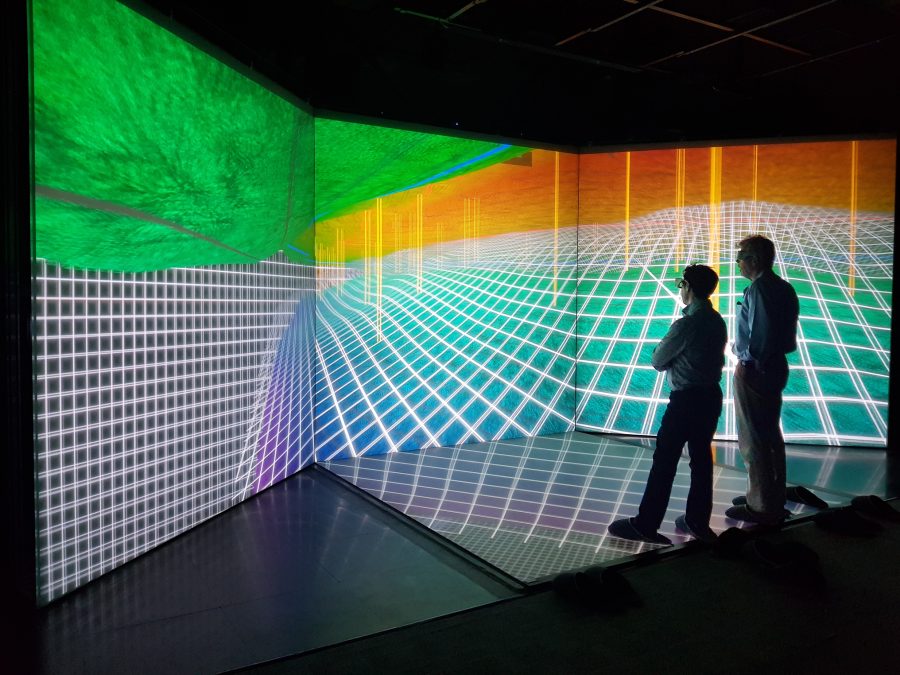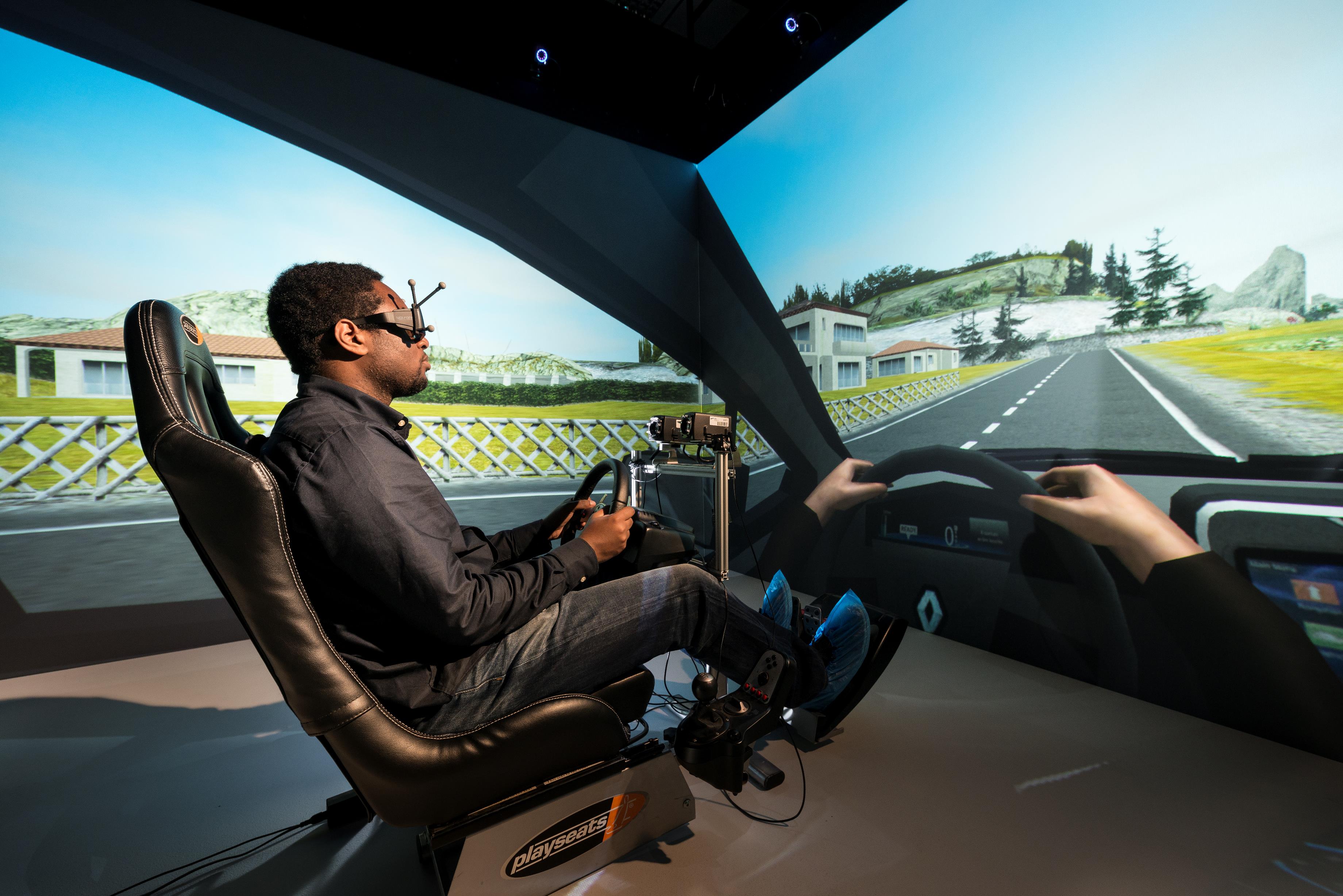VR TRENDS 2021
2020 has been an eventful year for Augmented Reality and Virtual Reality. This past year has changed the way we look at things. With the rapid shift to remote working and virtual, the industries have adapted swiftly. As the dust clears a bit and we look to the future of enterprise VR for 2021, one thing is clear: 2021 will bring its lot of innovation Here is a look at the top 3 VR trends to keep an eye on in 20211 - COLLABORATION IN TRAINING & TEACHING

In this era of digital devices, we are enabling better learning and teaching thanks to virtual reality. VR headsets have been deployed on a massive scale. But let’s take a look at the larger-scale immersive technologies and how their collaborative aspects can meet the industry’s needs.
Many of the limitations of head-mounted displays (HMDs) are now overcome thanks to large immersive displays such as CAVE’s (Cave Automatic Virtual Environment).
Indeed, by allowing multiple people to share the same VR experience, users can now collaboratively examine and manipulate complex 3D models with natural interaction and human 1-to-1 scale.
More than one user can be in the immersive environment at the same time and each user can see from their own point of view.
Professionals using VR are now able to train in a simulated environment that provides a significant degree of accuracy while avoiding the risks associated with making a mistake. They can collaboratively examine and manipulate complex 3D models with natural interaction and human 1-to-1 scale.
By providing a high-end solution with increased interaction, the CAVEs allow to better share information, improve the collaboration and design review between people, and enhance the decision-making process.
Not to forget that the potential of their applications is limitless: they are the look out this year!
2 - VR TO RESHAPE THE AUTOMOTIVE INDUSTRY?
 Virtual reality has been focusing on the product design and product development in the automotive industry for years: Manufacturers are now using VR systems to translate CAD designs into virtual cars.
Virtual reality has been focusing on the product design and product development in the automotive industry for years: Manufacturers are now using VR systems to translate CAD designs into virtual cars.
Engineers are now able to sit inside and walk around the vehicle. They can better handle on 3D designs, thanks to VR enabling software which can display 3D models on any VR display solution without limitation to resolution, size, shape or performance!
Every little detail can be inspected, and any potential design flaws can be spotted early on.
But the product design is not the only big technological milestone: Indeed, self-driving cars is the new trend for leading car manufacturers today.
The race to create fully autonomous and ‘driverless’ cars has paved the way for some of the biggest technological advances ever seen in the automotive industry.
Autonomous and assisted driving technology is going to play a huge role in the future of cars. Even though the fully autonomous car is still years away, this has not meant that manufacturers have not been able to take advantage of a variety of new technologies. Especially when looking to the future, as the increased accessibility of self-driving vehicles opens up personal transportation in a whole new way to many people.
This is done using cameras and a dashboard-mounted display without providing too much of a distraction for drivers.
VR and AI not only help through testing the reliability and the safety of the autonomous cars, but also to simulate any VR environment. By reconstructing any scenarios, any situation, Virtual Reality will be a great help, for instance in case of an accident, for insurance companies and law enforcement agencies.
It will help build tomorrow’s world and legislation.
3 -VR FOR AI & SECURITY

Experts have always been optimistic about the immersive technologies. AR and VR market should continue to soar and reach 170 billion dollars by 2022.
With this explosion of new technologies, the amount of possible cyber threats continually increases.
AR and VR have opened new doors for innovation. These transformational opportunities in the world we live in, created security vulnerabilities.
To overcome these vulnerabilities, companies are beginning to use AR and VR to their advantage, especially when it comes to providing cybersecurity training to their employees.
Thanks to the VR, company’ security systems can be taken to the next level.
With well trained employees, particular focuses are made in this sector: For instance, using artificial intelligence (AI) to enhance security defense, and anticipating nefarious use of AI by attackers have never been so important.
AI is helping under-resourced security operations analysts to stay ahead of threats.
AI can act as an advisor to analysts, helping them quickly identify and connect the dots between threats. By analysing security risks, they can find appropriate solutions and create a stronger system.
But VR not only help the security sector by training the operators, it also help finding more and more innovative ways to defeat the hackers.
For instance, thanks to VR, false version of a company’s network are today created to either trap the hackers in an alternate “reality”, bock them or remove them from the network.
Nevertheless, the enterprise market should always be mindful about the vulnerabilities and cybersecurity risks.




















